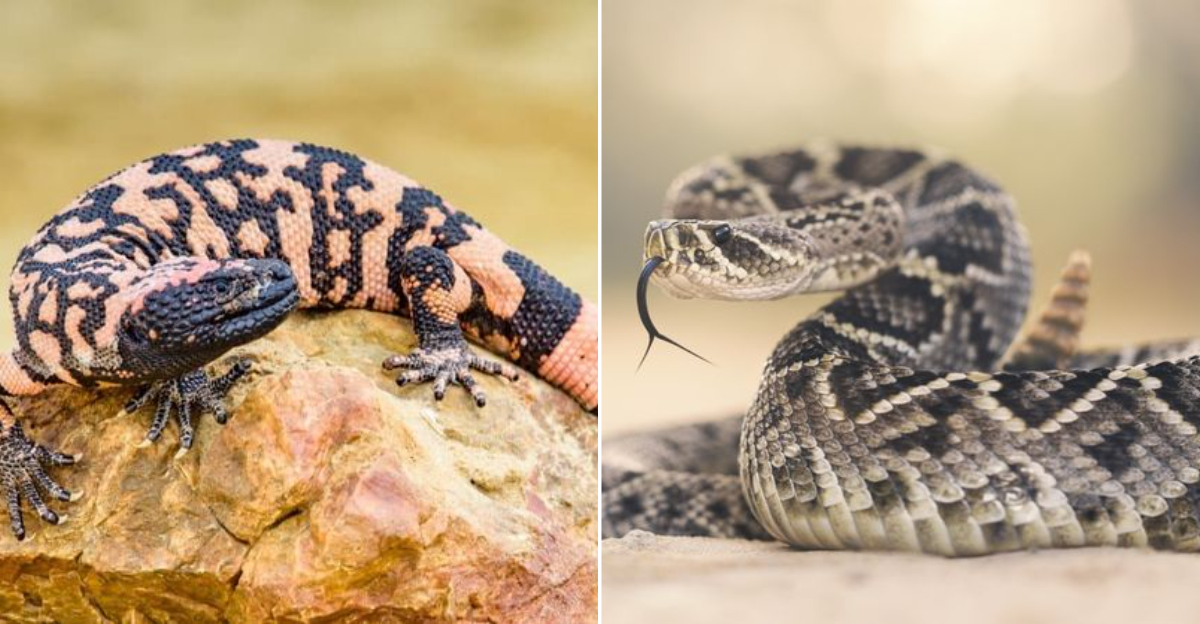Hitting the trails in Arizona?
Don’t be surprised if you share the path with a few scaly neighbors. Learning to recognize the desert’s most common reptiles isn’t just fascinating—it’s a smart move for any hiker.
Whether you’re exploring the sun-drenched Sonoran Desert or wandering through cooler high country, getting to know these nine reptiles will help you stay safe, tread respectfully, and truly connect with the wild heart of Arizona
1. Western Diamondback Rattlesnake: The Desert’s Warning Bell
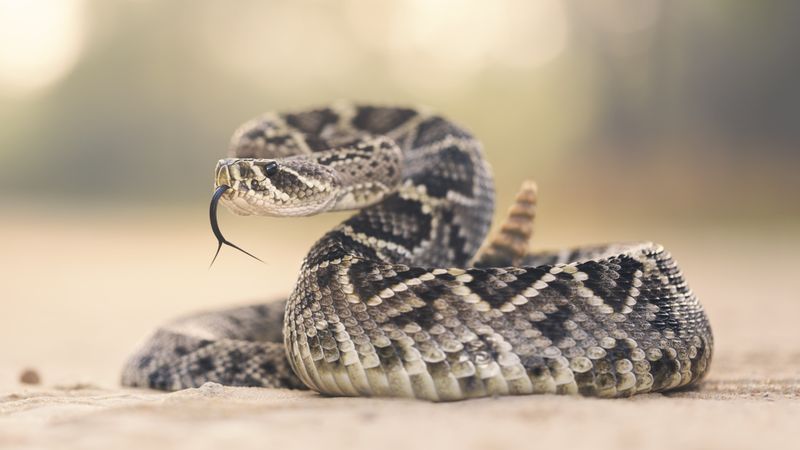
Those distinctive diamond patterns aren’t just for show—they’re nature’s warning sign. Western Diamondbacks reach 3-5 feet long and sport a rattle that grows with each skin shed, creating that infamous buzz when threatened.
During my Superstition Mountains hike last spring, one sunning on a rock gave me plenty of warning before I got too close. Remember: they strike at about half their body length, so staying 6 feet away is your safest bet.
Unlike myths suggest, they don’t chase humans. If encountered, freeze, locate the snake, then slowly back away. Most bites happen when people try to move, kill, or photograph these misunderstood creatures.
2. Mojave Green Rattlesnake: The Potent Predator
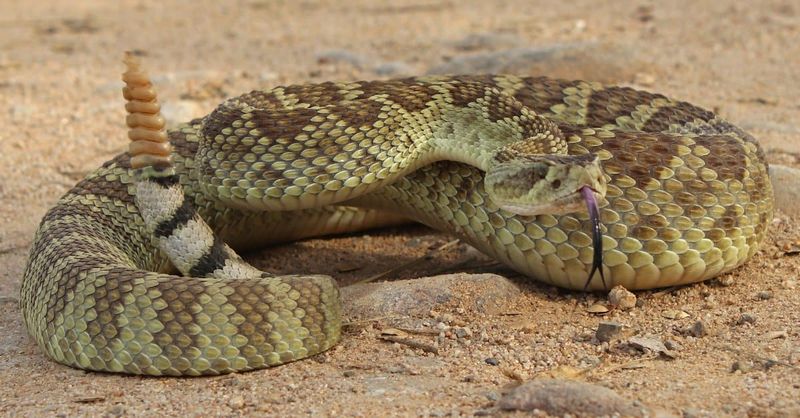
Green-tinged scales and potent neurotoxic venom make the Mojave Green one of Arizona’s most dangerous reptiles. These rattlers prefer desert flats and low mountain slopes, especially in western Arizona near the California border.
Their venom targets the nervous system—unlike most rattlesnakes—and can lead to serious symptoms like trouble breathing. The telltale light green tint and black-and-white banded tail before the rattle help identify this serious threat.
Mojave Greens are generally more aggressive than other rattlesnakes and may strike with less provocation. Hiking with trekking poles can help detect their presence, as they’ll often rattle when feeling ground vibrations from approaching hikers.
3. Sidewinder Rattlesnake: The Desert Dune Master
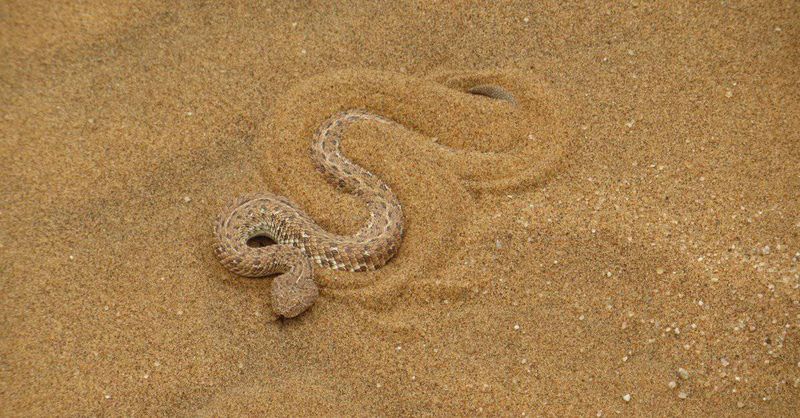
Sand surfing specialists with their unique sideways locomotion, Sidewinders leave distinctive J-shaped tracks across desert dunes. Their horn-like scales above each eye aren’t just cool-looking—they shield their eyes from sand while burrowing.
Smaller than other rattlesnakes at 1.5-2 feet long, Sidewinders are primarily nocturnal during hot months. You’ll mostly spot them at dawn or dusk when temperatures are more comfortable.
Though venomous, they deliver less venom than their larger cousins, making bites less severe (though still medical emergencies). Their light tan or cream coloration with brown blotches provides ideal camouflage in sandy washes, so watch your step carefully when hiking through these areas.
4. Gila Monster: The Venomous Wanderer
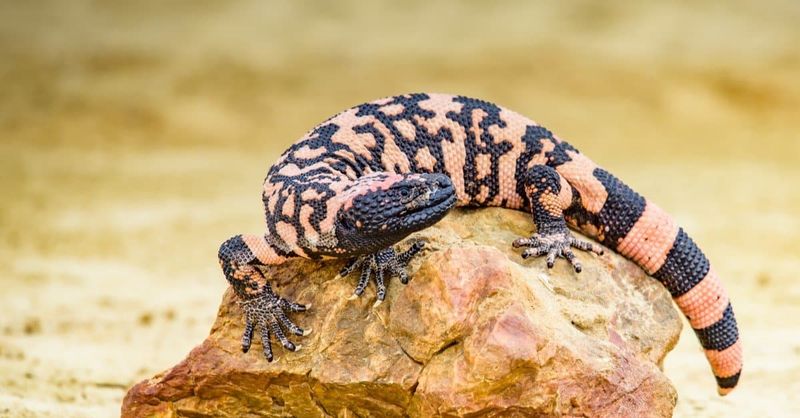
Black bodies decorated with pink, orange, or yellow beaded patterns make Gila Monsters the desert’s walking jewels. As one of only two venomous lizards in the world, they deliver toxins through grooved teeth in their lower jaw by chewing rather than injecting.
Hiking through the Tucson Mountains years ago, I spotted one lumbering across the trail—their slow-motion movement is nothing like the lightning-quick rattlers. Gila Monsters spend 95% of their lives underground, so seeing one is actually a rare treat.
Despite their venomous reputation, they’re docile unless handled. Their bright coloration serves as a warning: “Don’t touch!” Respect this protected species by observing from at least 6 feet away.
5. Sonoran Desert Tortoise: The Ancient Shell-Bearer
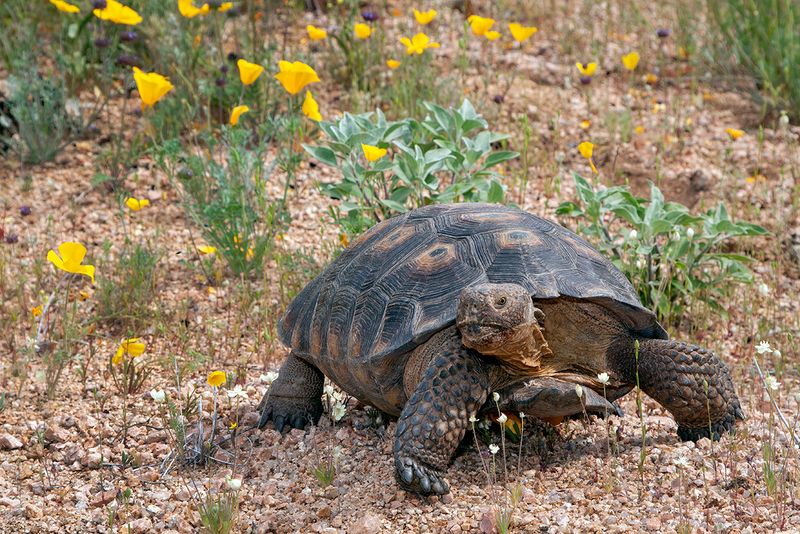
Meeting these gentle giants on the trail feels like encountering living history. Sonoran Desert Tortoises can live 50-80 years and sport high-domed shells with growth rings that tell their age story.
Unlike more dangerous desert dwellers, these protected reptiles pose zero threat to hikers. Their powerful elephant-like legs help them navigate rocky terrain and dig burrows that can extend 30 feet into hillsides. They’re most active during monsoon season when desert plants flourish.
If you encounter one, never pick it up—they store water in their bladder and may release it when frightened, potentially causing fatal dehydration. Take photos from a respectful distance and consider yourself lucky to spot this increasingly rare desert icon.
6. Desert Iguana: The Heat-Loving Sunbather
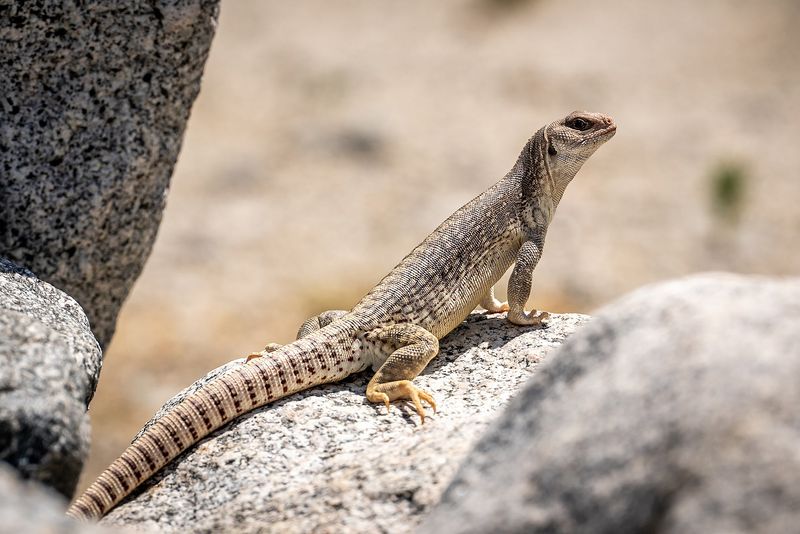
These pale gray-to-cream colored lizards can tolerate body temperatures up to 115°F—higher than any other North American lizard! Desert Iguanas have a distinctive row of spines along their backs and can grow up to 16 inches long, including their elongated tails.
Primarily plant-eaters, they munch on wildflowers, buds, and fruit, making them harmless to hikers. Their pale coloration reflects sunlight, while their ability to flatten their bodies against hot sand helps regulate temperature.
When frightened on desert trails, they’ll sprint toward the nearest creosote bush and disappear down a burrow. Early morning hikers in the western Arizona deserts have the best chance of spotting these fascinating creatures as they emerge to begin their daily sunbathing routine.
7. Chuckwalla: The Inflatable Rock-Dweller
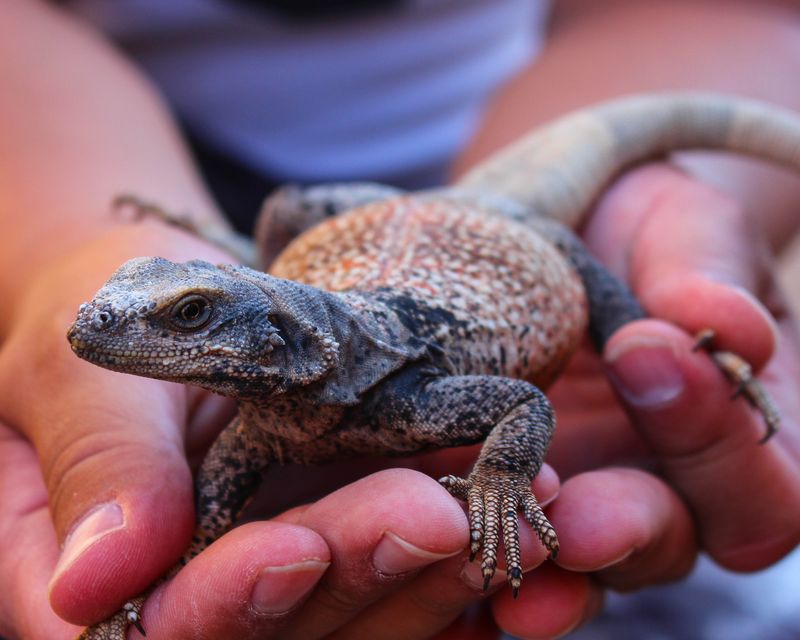
Rock crevices transform into fortresses when Chuckwallas employ their unique defense mechanism. These large lizards (up to 16 inches) wedge themselves into tight spaces, then inflate their bodies with air to become immovable—a technique that leaves predators frustrated and hikers amazed.
Males display vibrant orange, red, or black coloration during breeding season, while females maintain more subdued gray or brown tones. I once watched a male perform push-ups on a boulder near Phoenix’s Camelback Mountain—an impressive territorial display meant to intimidate rivals.
Completely harmless to humans, these vegetarians feast on desert flowers, leaves, and fruit. Look for them sunning on rocky outcrops during morning hikes, especially in areas with brittlebush and cactus flowers they love to eat.
8. Common King Snake: The Snake-Eating Ally
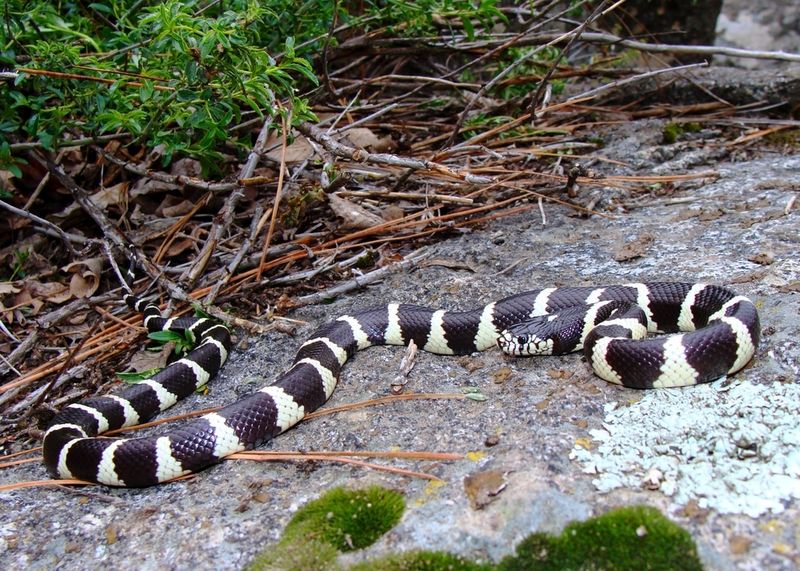
Glossy black bodies wrapped with vibrant yellow or white bands make King Snakes among the most recognizable reptiles on Arizona trails. Don’t let their bold colors trigger fear—these non-venomous constrictors actually help control rattlesnake populations by hunting and eating them.
King Snakes possess natural immunity to rattlesnake venom, making them the unsung heroes of the desert ecosystem. Growing 3-4 feet long, they’re active hunters that also prey on rodents, birds, and lizards.
If encountered, they might briefly perform a defensive display by vibrating their tail against dry leaves (mimicking a rattler), but they typically flee rather than confront humans. Their presence on a trail actually suggests fewer venomous snakes in the area—a welcome sign for nervous hikers.
9. Western Collared Lizard: The Speedy Two-Legger
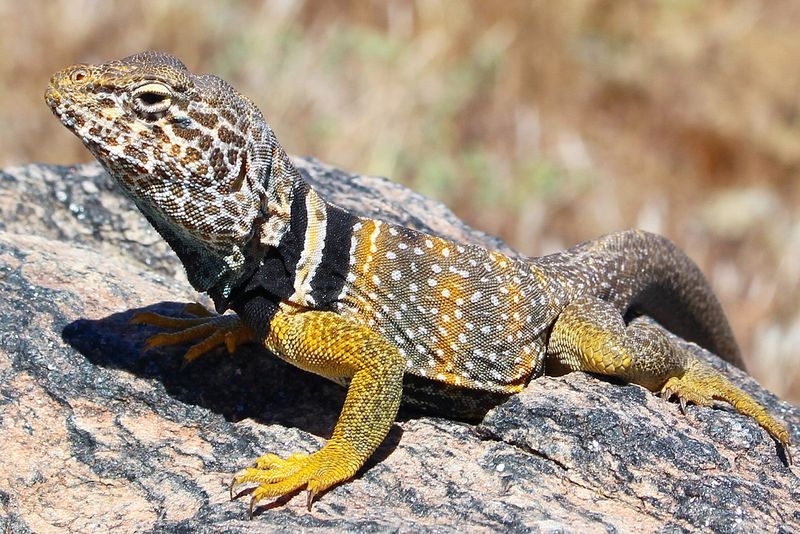
Straight out of a prehistoric picture book, Western Collared Lizards sprint across desert trails on powerful hind legs, reaching speeds of up to 16 mph. Their vibrant turquoise bodies and distinctive black collar markings make them look like miniature dinosaurs racing through time.
Males display bright breeding colors from April through June, turning heads with electric blue bodies and yellowish heads. These carnivorous hunters prey on smaller lizards, insects, and spiders, often perching on rocks to spot their next meal.
When hiking near rocky outcrops in northern Arizona, pause occasionally to scan for these colorful characters. Unlike many reptiles, they’re curious and sometimes allow close observation if you move slowly. Their bipedal running style—balancing on hind legs with tail held high—creates unforgettable moments on any desert adventure.
